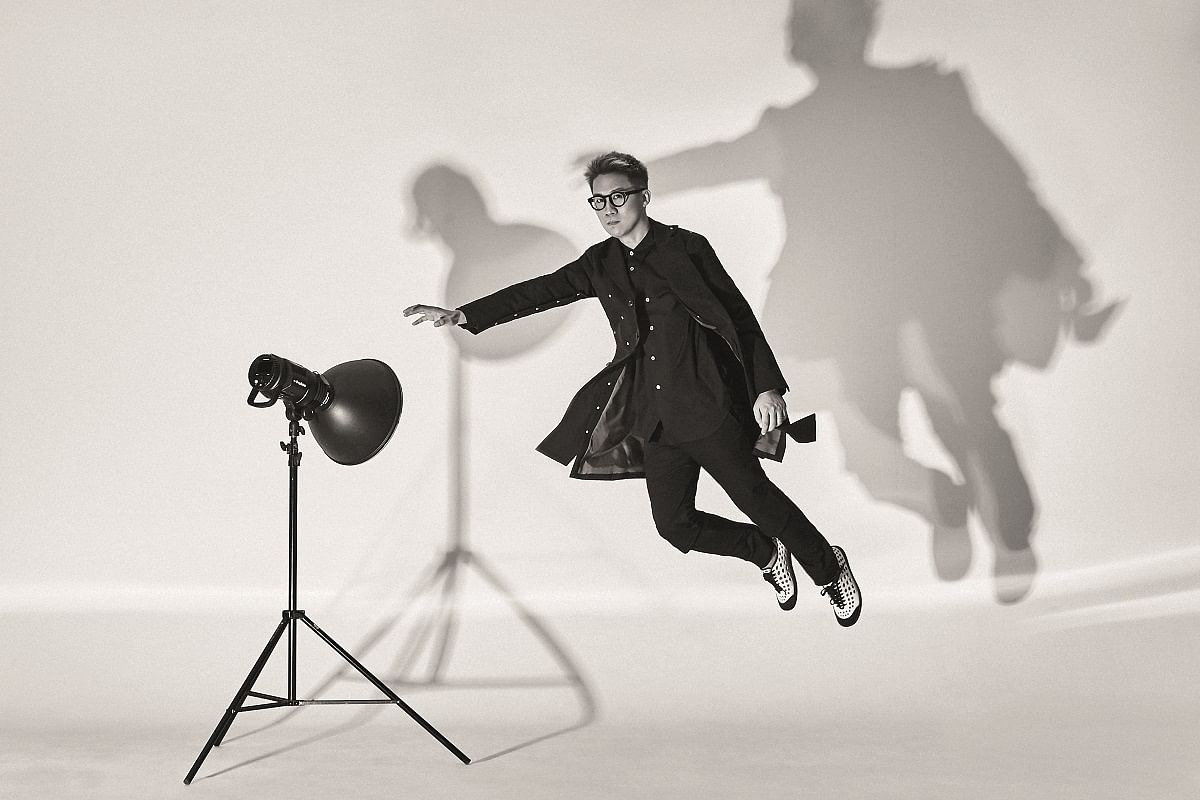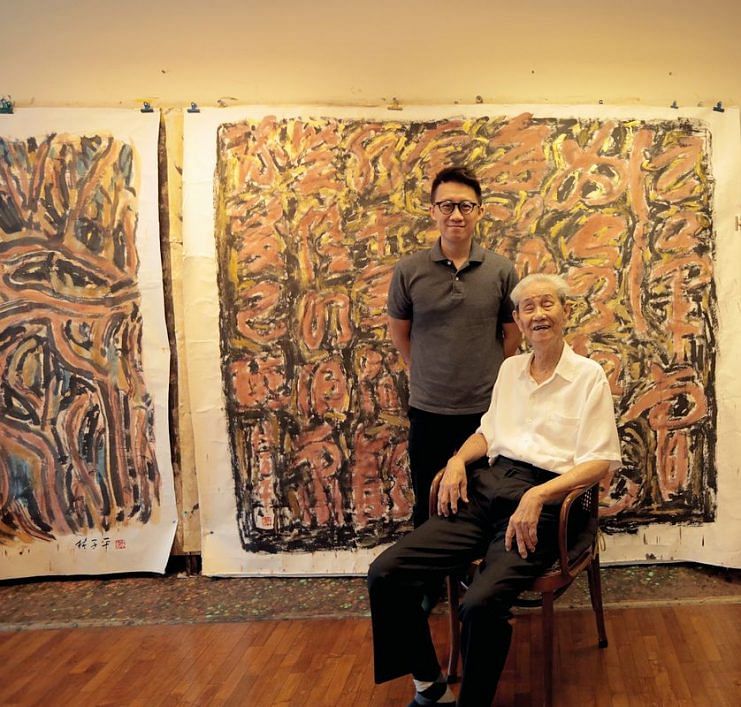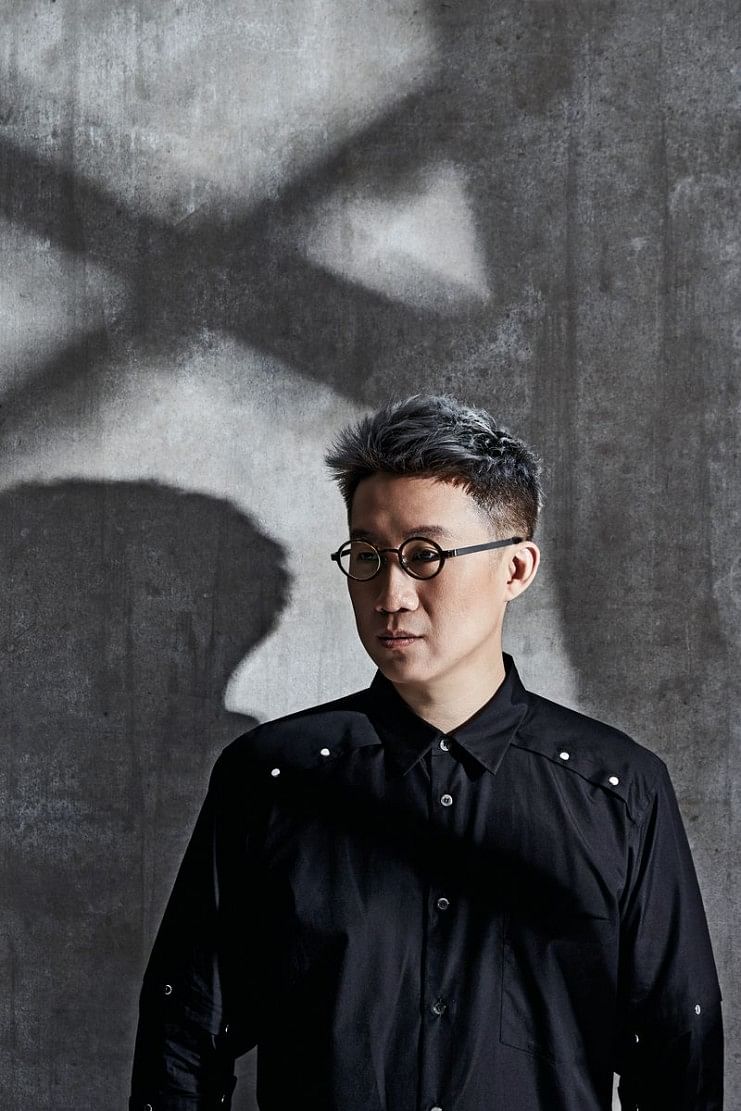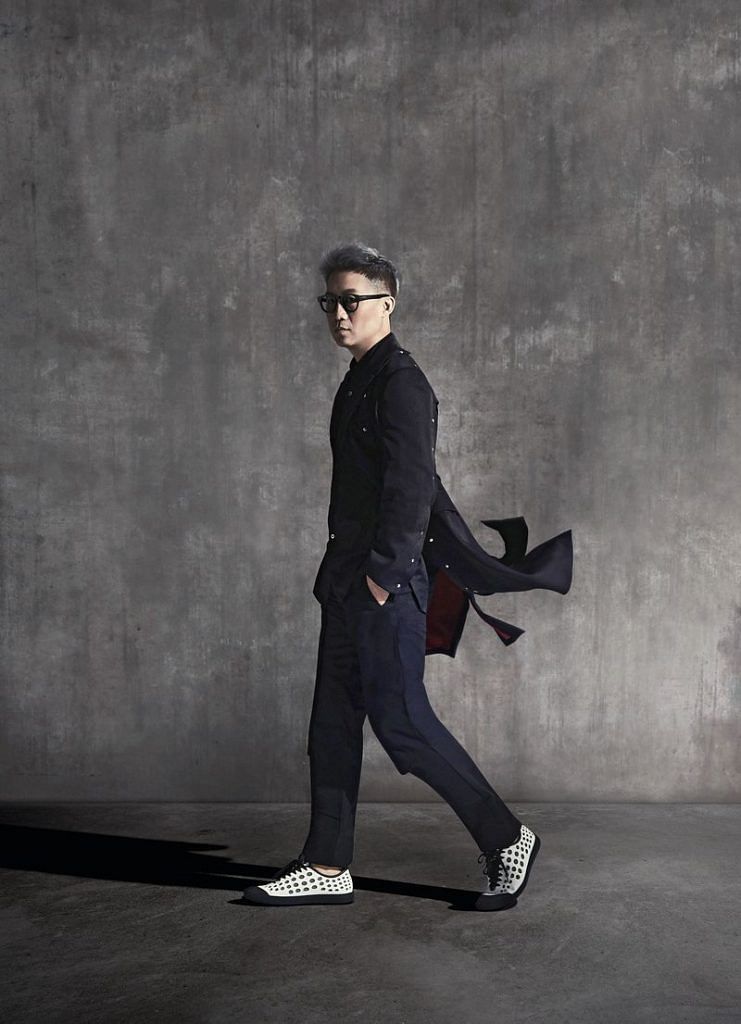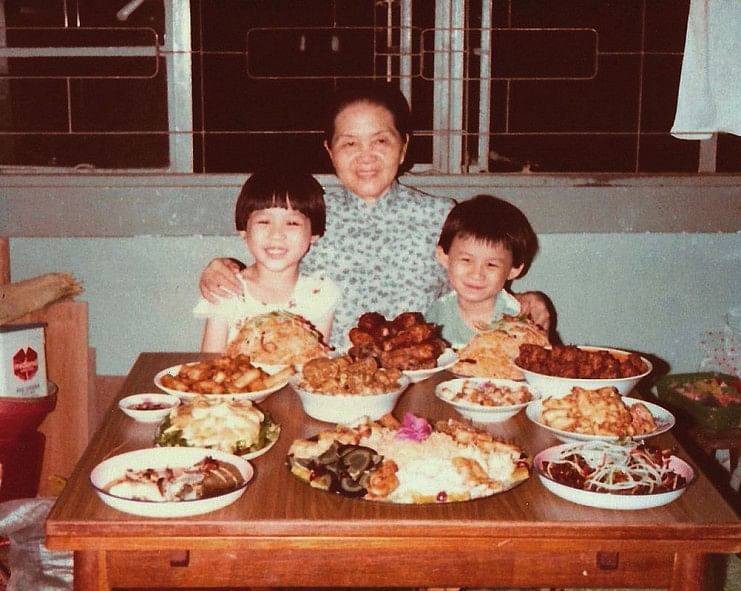[dropcap size=small]J[/dropcap]eff Cheong has his eyes on the prize: getting Singapore’s legendary coffee roaster Tan Tiong Hoe to agree to an interview.
At Tiong Hoe Specialty Coffee, the fiercely guarded older man is proving to be a tough subject. “What is the colour of perfect coffee?” challenges the 73-year-old Tan.
Stumped, Cheong presses on. “It is amber,” says Tan bitingly.
This conversation goes on for hours, even days, before Cheong proves himself worthy of Tan’s confidence and the latter finally acquiesces to be a part of Cheong’s popular Singaporean of the Day, a Web video series showcasing the extraordinary stories of ordinary Singaporeans. “This man is a legend,” marvels Cheong.
Then it came time to convince 93-year-old pioneer artist Lim Tze Peng. “Meeting Lim was a fanboy moment for me,” recalls Cheong. Citing Lim’s ink painting of the Singapore River as his favourite artwork, Cheong was determined to overcome Lim’s reluctance. Through the help of mutual friends, the artist finally relented.
| The Coffee Student from Singaporean of the Day on Vimeo. | The Calligrapher from Singaporean of the Day on Vimeo. |
Singaporean of the Day, which features 49 Singaporeans and their stories, has gone on to captivate the nation and the media since debuting in 2012, inspiring volunteers to come on board and sparking enthusiasm from local expatriates. “Some of our foreign friends e-mailed us and wrote, ‘Thank you for breathing soul into the skyscrapers that I know of today in Singapore.’” the president of digital agency Tribal Worldwide Asia recalls.
Thirty minutes into our two-hour interview and one sees why Lim and Tan were won over by Cheong. At 40, his effervescent personality shines: persuasive, determined and endlessly curious as he picks our brains on certain marketing strategies he has been working on. “How do you think that idea will pan out?” he asks for our opinion earnestly.
Bursting into Singlish and vivid on details during our conversation, he doesn’t mind sharing that his preference for Japanese designers Yohji Yamamoto and Comme des Garcons – other than for their cutting-edge aesthetics – is one of practicality. He explains: “No need to iron. They are meant to look crinkled, which is great for me, as I travel so frequently.”
And to answer our question about tips for marketing to millennials, Cheong unabashedly whips out his iPhone and googles “top marketing words beginning with Y”. “Let’s see what we can find,” he says.
WINNING THE DIGITAL GAME
Since taking over the helm of Tribal Worldwide Asia eight years ago, he has rapidly grown the agency from a four-man team to a 105-strong agency. Tribal Worldwide Singapore was one of the first non-Japanese agencies to win the Uniqlo account; it was also the first agency to bring the iconic Changi Airport Group brand to life.
On his watch, Tribal Worldwide Asia, which is advertising giant DDB’s digital arm, has bagged numerous awards, including the Digital Agency of the Year for Southeast Asia at Campaign’s 2011 Agency of the Year Awards, at The Effies, at the Asian Marketing Effectiveness Awards, at Cannes and at The One Show Interactive.
How does he succeed in the fiercely competitive, ever-changing digital world? The answer lies in novelty.
“If you look at all the successful things that people like, it’s actually the user experience, which has been very underplayed in this part of the world,” he says. “The best user experience will get the consumer excited. Apple holds the highest standard. Apple is successful because of the 1,001 things it’s omitted.
“It’s a very good principle to follow. Consumers are so smart these days. What can we do to delight them? It’s through experimenting and exploring the cool things that we can do.”
5 Tips for Capturing the Hearts and Minds of Millenials Online (swipe / click to navigate)
Keeping up with the latest trends is also part of Cheong’s job. “Now got Pokemon Go to keep up with leh,” he says of the mobile game that has got Singapore and the world excited about hunting down critters. Are there any hotspots around his office, we ask. “So many! Let me show you,” he enthuses.
There’s a “gym” – where players go to battle rival teams – at the massive Buddha statue that can be seen from his office at Pico Creative Centre. Some players have placed a “lure” (to attract Pokemon) at Pokestops (where players can collect items to play the game) on the ground level and at nearby Chinese restaurant Tim Ho Wan.
He attributes superior user experience to explain why Pokemon Go has become one of the most successful virtual reality apps in recent history. “It is a hybrid version of a virtual reality app. Look at how smartly it’s designed: Once you’re in an area, the app fires up the camera.”
Cheong is clearly in tuned with the digital landscape. When our art director asks him to rock back and forth on his heels to mimic walking, he says: “Oh, like those people on Instagram and their OOTDs, right?”
Which brings us to another one of Cheong’s big passions: technology. Together with a team of technologists, he has come up with a wide range of cutting-edge technological solutions for his clients.
Some of the most successful ones include the launch of Singapore Airlines’ first A380 with an online auction of its first flight for charity when he was at former agency TBWA, and the McDonald’s Surprise Alarm app at Tribal, which brings consumers a new surprise deal each day.
“This market is still growing. That’s what keeps me excited because you never know what will come tomorrow. You could be the one that’s creating the next big thing.”
THE ROOTS
The origins of his storytelling gift can be traced to his childhood in the early 1980s. Home was a three-room flat in Stirling Road, and he lived with an extended family of 10 – his grandparents, uncles, aunts, parents and two sisters. Finances were tight and toys were a rare treat.
As an irrepressible six-year- old, he made himself a video camera, complete with flaps, out of cardboard boxes. The young Cheong soon found a way to wrangle some toys into his possession. He started exchanging chalkboard drawings of the then hit cartoon Gatchaman for toys.
“So, ever since kindergarten two, I’ve been a businessman. One day, my mum found out. We never had money to buy any toys. When I told the truth, I was dealt with severely. I cried all the way to school and had to return everything.”
He describes his childhood as a colourful kampung, full of stories and vivid experiences. Neighbours never closed their doors and were always sharing home-cooked food with one another. “Back then, we had Rediffusion. My grandma would listen to Hokkien ghost stories that would scare the living daylights out of me. I thought there was a person living inside the box.
“The fact that the programme could grip you so strongly, emotionally, got me really excited. I just thought it was something quite powerful. If I could be in that space to do that, it would be quite cool.”
Cheong’s creative talent was spotted by his hairdresser mother who sent him for art classes at the local community centre. “By the third session, I had taken over the lesson. I started drawing on the whiteboard for the other students to follow.”
The turning point came when he was studying at Geylang Methodist Secondary School. His design and technology teacher opened his eyes to the world of graphic design and encouraged him to join the new course at Temasek Polytechnic.
There was only one detail Cheong hadn’t planned for. Art wasn’t one of his O-level subjects, and that was a pre-requisite for the course. “I don’t know how I did it. I managed to convince the Ministry of Education to give me permission to take art as an additional O-level subject,” says Cheong. Against the odds, he scored a distinction.
The obstacles didn’t stop there. His family wasn’t supportive of his decision to pursue graphic design. “They called a family meeting. They said, ‘You want to be a fine artist? Artists only get famous when they are dead!’ I went against the wishes of everybody. They wanted to throw me out of the house.”
We ask him what convinced him to pursue his calling anyway. He offers this simple answer: “It’s the love of being able to create things. It’s the love of being able to communicate.”
THE STORIES OF OUR TIMES
More than just creating interesting content out of personal interest, what Cheong hopes to do is to fly the Singapore flag – which was why he embarked on Singaporean of the Day.
In 2012, a Gallup survey ranked Singapore as the most emotionless society in the world. Cheong was riled. “I was very affected. It was such a strong statement.” Social media was abuzz with sentiments about Singapore being a “dead” society. “I felt our sovereignty was being invaded. It was like war,” he recalls. (The Peak’s response to that position, here.)
“I felt our sovereignty was being invaded. It was like war.”
– on Singapore being ranked as the most emotionless society in the world
Singaporean of the Day was a counter-response by Cheong and his staff. Within three days, they found their first profile, a street-alley barber, and started getting the Web video series out to the public. “The idea was, ‘Let’s go and find someone who is not emotionless, someone who is very passionate about the stuff they do. Let’s do a story, and let’s fight back lah!’ As creators, we have every right to do so.”
One of Cheong’s latest high-profile projects is The Provision Shop, a tele-movie he created with local filmmaker Royston Tan. Like so much of the inspiration that fires his digital craft, the idea for the film, which was commissioned by Ministry of Communications and Information, was sparked by a personal experience. Cheong says he was amused by a bickering couple at his local provision shop in Marine Parade. He had been observing the changes at this shop over the years.
“The birth of this idea was how a shop at a corner is actually embracing the growth and diversity of a neighbourhood. There are a lot of stories to be told about Singapore. The Singapore identity continues to be uncovered because we are not a homogeneous society. We must to continue to find the unifying glue to bring everybody together.”
Cheong’s latest personal project is still a work in progress: a series of stories using puppets to challenge stereotypes every Singaporean child knows. When we visited his office, he showed off a female puppet named Fatimah, a parking-warden diva, complete with big hair, big lips, blue sequin top and an impressive bust. Cheong plans to use his latest project to spark social commentary.
“I have three kids and when I read their essays, I get a shock. My kids are still using the same characters I used in school many years ago: Xiaoming, Siti, Ali and Gopal. It’s always the same stereotypes.”
He’s already commissioned someone to play Xiaoming, a 40-something man with a receding hairline whose dramatic life is characterised by weather elements.
Now it’s just about getting the idea off the ground. “I want these characters to be unapologetic. They will speak in Hokkien and swear. It will talk about the story of our times.”
TREND SPOTTING
Staying abreast of the trends also keeps him sharp in the marketing battle to capture eyeballs. After all, if he hadn’t anticipated the digital age 20 years ago, the Jeff Cheong today might be a different person.
After graduating from his graphic design course in 1996, the Internet was only just beginning to emerge. “This whole new technology was just developing and I wondered what would happen next.” Together with a bunch of friends, he taught himself new software skills through books. To test these freshly acquired skills, he took on freelance work.
“We didn’t know if we could build anything. We just said we could and we fumbled along the way. The risk was really high as it was a commissioned job. We managed to do it because of the pressure and prevailing circumstances.”
Today, Cheong remains ahead of his peers, and sometimes ahead of the trends themselves. In 2013, Cheong and his colleague, Jayden Tan, both avid photographers, created LevitationSG, a series of “levitation” images showing ordinary people in gravity-defying positions – without the use of sophisticated photo-editing software. The series went viral across Asia.
“From Levitation, I came up with various techniques of doing things. I learnt how to generate content,” he says. “It’s also a way for me to show the rest of my agency the importance of trying. You can’t plan for your idea’s success, but it may become successful.”
To demonstrate the positions that he created for his subjects, we asked if he would “levitate” for the camera. “I tell you what,” he says. “I’ll just jump and pose. At the most, I’d cramp up. I probably need to book myself in at the TCM clinic.”

This uncanny ability to turn inspiration into creative gold has seen Cheong play a major role in shaping some of Singapore’s most iconic brands and campaigns: The Future of Us exhibition, corporate branding for Project Jewel at Changi Airport and the Singapore Memory Project.
This month sees the launch of Equator, DDB Worldwide’s global centre of excellence for technology. An initiative backed by the Singapore Economic Development Board, it will offer end-to-end technology and innovation solutions to clients worldwide, signposting Singapore’s rising role as a regional hub for digital innovation.
It’ll be housed at the Tribal Singapore office and Temasek Polytechnic. “Equator will be the key focus to drive our influence outside Singapore to the rest of the world. We want to be the earth’s hottest tech shop.”



